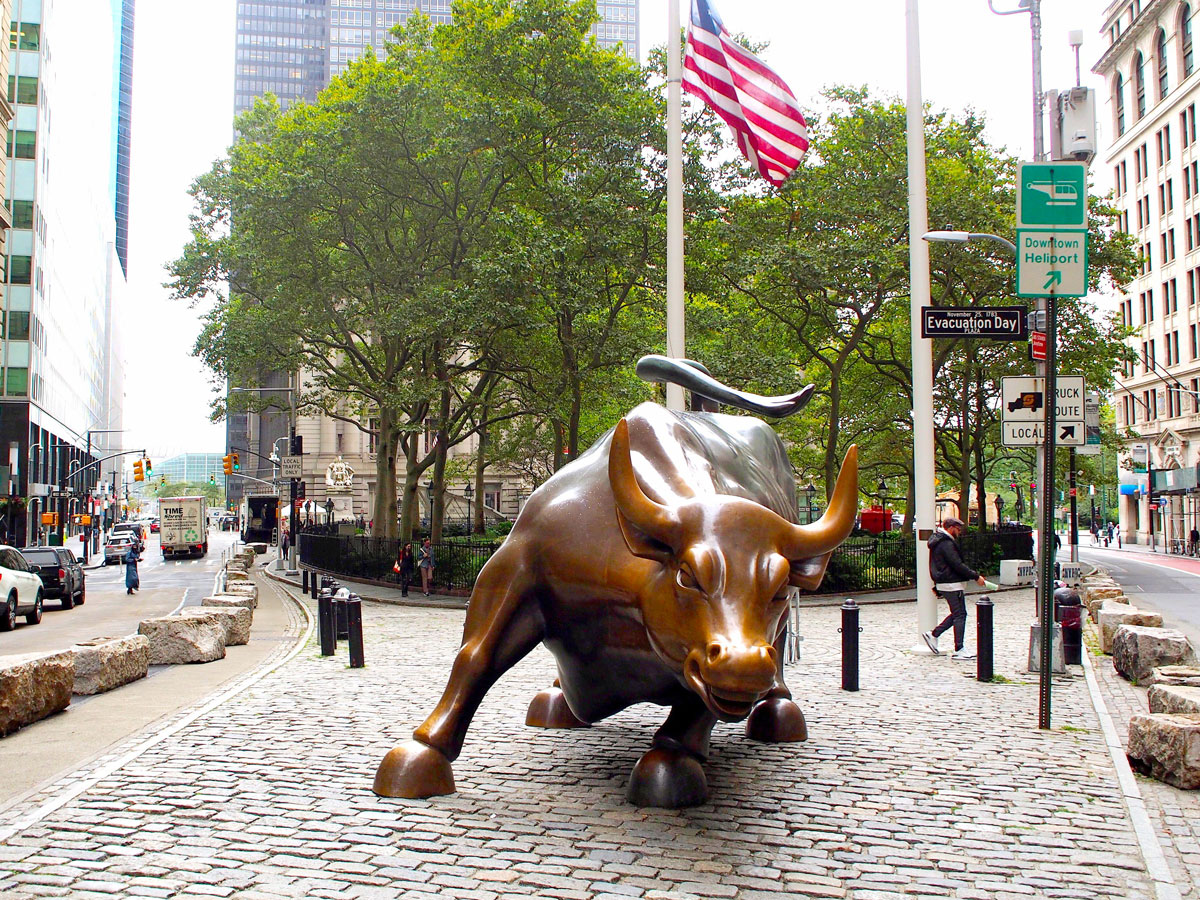These days, public parks are often associated with outdoor leisure, from lunchtime picnics to casual evening strolls and community events. However, our idea of a modern-day park is vastly different from America’s earliest parks. Centuries ago, public parks were created for unique and specific purposes, such as animal husbandry, town assemblies, or even burying the dead. Below, learn about six of the oldest parks in America, and how they came to be.
6. Bowling Green – New York, New York

New York’s Bowling Green was first designated as public property in 1686, though it didn’t officially become a park until 1733. In the 1730s, it was rented out to the public and paid for in peppercorns, and the renters improved the space in downtown Manhattan with the addition of grass, trees, and a wooden fence. Over the years, the park morphed with the changing times. In 1770, a statue of King George III was erected, only to be destroyed six years later, when an angry mob tore it down after the first public reading of the Declaration of Independence. By the late 18th century, it became a hot spot for upper-crust New Yorkers to show off their most fashionable attire.
Today, Bowling Green is best known for the statue of the Charging Bull, which has been on display in the park since the 1980s. Located in the city’s Financial District, the intimidating bronze sculpture not only represents the country’s tenacity but also serves as a nod to the prosperity of nearby Wall Street.
5. San Pedro Springs Park – San Antonio, Texas
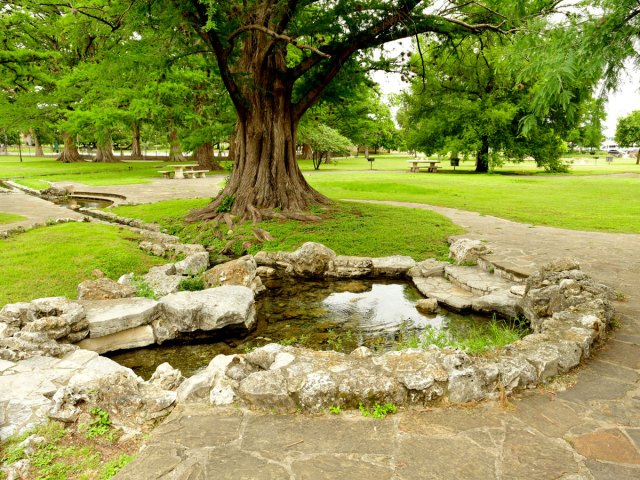
Although San Pedro Springs Park has officially been a park for nearly 300 years, it’s been an informal gathering place for much longer. Before Spanish colonists discovered the park’s thermal springs in 1709, they were a favorite meeting place for Indigenous peoples who resided in the Southwest for thousands of years.
San Pedro was officially designated as a park in 1729 when King Philip V of Spain declared it to be public land. As the springs provided essential water to the community, the park was first used for farming and encampment, before later becoming a recreational site. Today, the park’s thermal water source is still a major draw, with a public pool fed from an aquifer. Other park amenities include a gazebo, a skate park, tennis courts, and a library.
4. Jackson Square – New Orleans, Louisiana
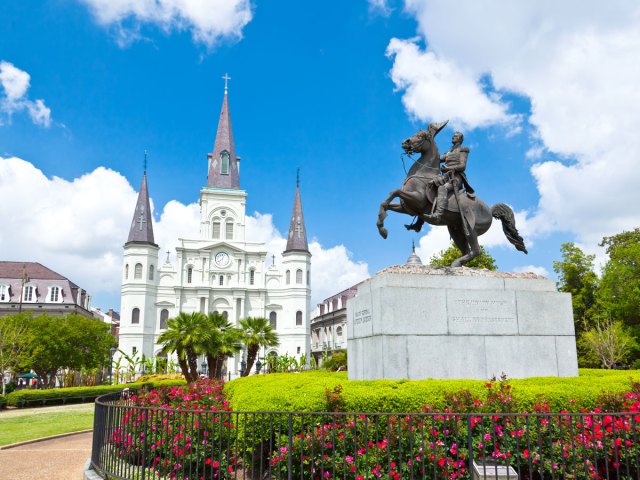
Jackson Square’s location on a bend of the Mississippi River was no accident. In 1718, French colonists, with help from local Native Americans, strategically selected the river portage to be the capital of the Louisiana territory. Three years later, Place d’Armes was established as one of the region’s first public parks. The park’s pleasing, symmetrical architecture is thanks to the French architects who designed the central square. The square was a gathering place for French colonists to congregate, attend religious services, and access the port, while soldiers could often be seen practicing military formations on the grass.
In 1851, the park was renamed for General Andrew Jackson, the hero of New Orleans in the War of 1812. As an open-air art colony, it has long since been a haven for artists who are permitted to sell their works within the park.
3. Franklin Square – Philadelphia, Pennsylvania
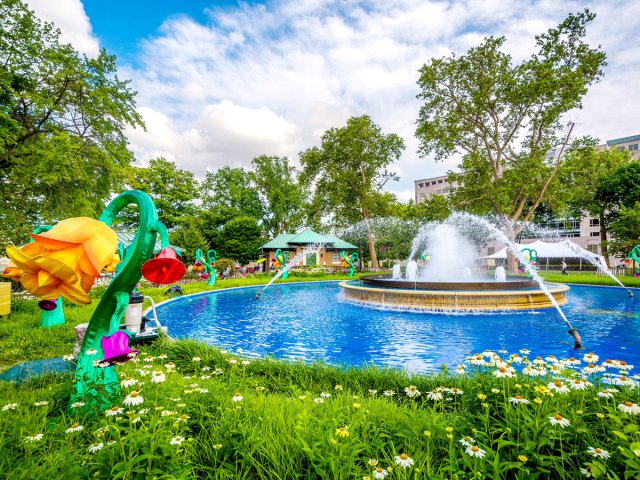
When William Penn first designed Philadelphia in 1683, his “greene country towne” highlighted the importance of public spaces. Formerly known as “North Publick Square,” Franklin Square was one of the original parks spaced across Penn’s city plan.
Throughout its tenure, Franklin Square has had many iterations, including a cemetery, a cattle pasture, ammunition storage, and a parade ground. The park’s landmark foundation was built in 1838 and remains the nation’s oldest public water fountain. Nearly a decade later, it was also the site where the country’s unofficial park mascot — the urban gray squirrel — was first introduced to public spaces.
Since being restored in 2005, Franklin Square has added a carousel, a mini golf course, a burger joint, and choreographed light and sound fountain shows, which are timed to the machinations of the park’s historic waterworks.
2. Washington Park – Newark, New Jersey
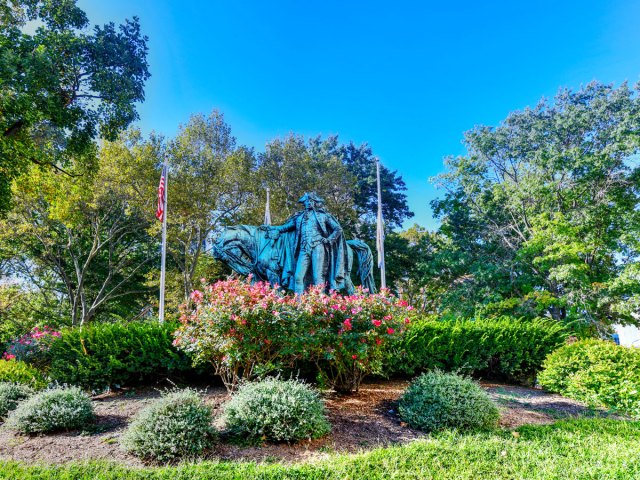
Dating back to 1667, Washington Park was first commandeered by English Puritans, who used the land communally to tend to animals and referred to it as “North Common” or “Upper Green.” It wasn’t until after the Revolutionary War, in 1795, that the land officially became a park named for George Washington.
Since then, Washington Park has become a cultural epicenter in Newark, surrounded by notable institutions such as the Newark Museum of Art, the Newark Public Library, and Rutgers University School of Law. Historical sights within the park include Washington’s Retreat Marker, which displays the route of Washington’s army when they marched through New Jersey, and the nearby statue of the famed general and his horse. The park also contains the oldest statue in Newark, which dates to 1890 and pays homage to Seth Boyden, the American inventor who created patent leather.
1. Boston Common – Boston, Massachusetts
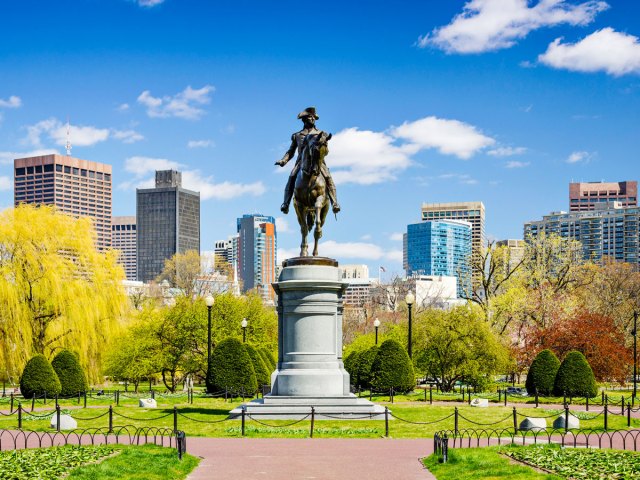
Established in 1634, Boston Common is the oldest public park in the U.S. The park’s 44 acres were initially purchased by Puritan colonists who needed a communal pasture for cows. Over the years, Boston Common was also used for military training, town assemblies, and public hangings from the Great Elm. The park played a pivotal role during the Revolutionary War, serving as the site of the colonial militia muster and later an encampment for the Redcoats. Today, it is fittingly home to the Central Burying Ground, a historic cemetery that contains both British soldiers and patriots.
To honor its history, Boston Common marks the start of the Freedom Trail, a historic walking trail that traverses Boston’s many sites of historic significance. Events like Shakespeare on the Common and the Citywide Arts Festival draw large crowds, as do the public assemblies and peaceful protests that have historically taken place in the Common.
More from our network
Daily Passport is part of Optimism, which publishes content that uplifts, informs, and inspires.






